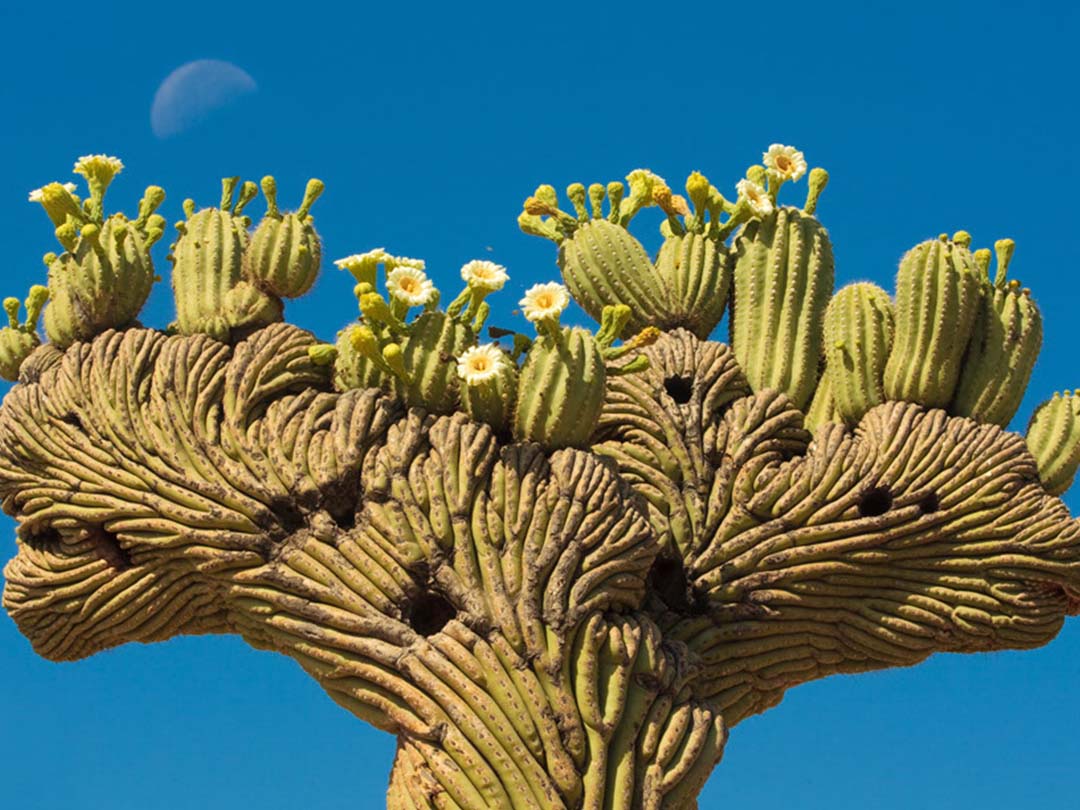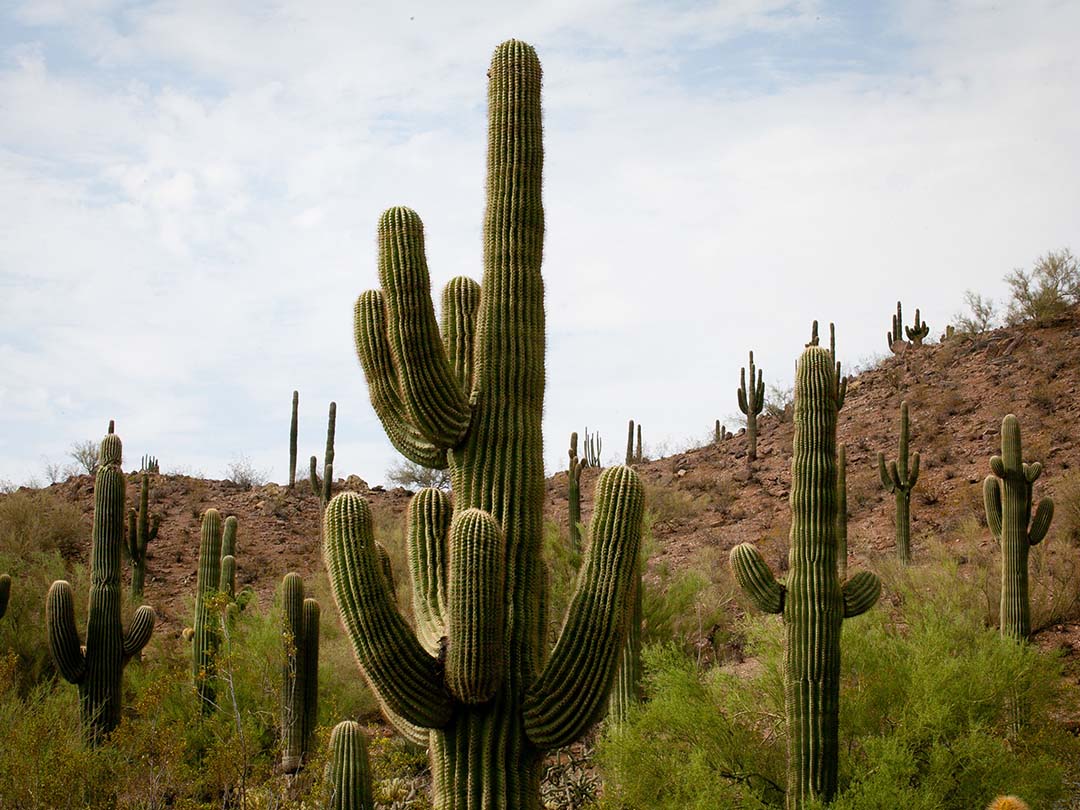Saguaros are some of the most interesting species in the cactus family. Standing tall with arms raised in a perpetual state of hello, saguaros are the tallest cactus in the United States.
This iconic cactus has adapted mechanisms to not only survive but thrive in the Sonoran Desert, where they are native. There’s a reason so many people are fascinated by this majestic desert plant.
The saguaro is one of the most well-studied species in the cactus family. There are several interesting characteristics about them and their adaptation to the Sonoran Desert, but for brevity, we want to share the five coolest facts about them.

1. Named After Andrew Carnegie
The saguaro (Carnegiea gigantea) is named after industrialist and philanthropist Andrew Carnegie, whose Carnegie Institution established the Desert Botanical Laboratory in Tucson in 1903. It now operates as Tumamoc: People & Habitats, a part of the University of Arizona’s College of Science.

2. Few Grow Rare Formation Called Cristate, or Crested
A small number of saguaros appear crested — a fan-like form which is referred to as cristate. The cause of this mutation is unknown. There are several theories as to what starts it, including damage by frost, lightning and genetics. Crested saguaros form this fan shape when the cells in the growing stem start to divide outward rather than in a circular pattern of a normal cactus. According to experts, there have been more than 2,000 crested saguaros discovered and documented.

3. Ability to Hold and Store Water
In order to survive periods of drought and harsh conditions, saguaros have developed a number of strategies, including their ability to store water. Saguaros have accordion-like ribs and a stem succulent that allows them to store hundreds of gallons of water during rainfall. As more water gets stored, the skin of the saguaro starts to expand to make room for more storage. As a result, these cactus can be very heavy. At full capacity, a saguaro can weigh over a ton.

4. Shelter for Desert Wildlife
The saguaro cactus serves as a hotel for several desert wildlife. Gila woodpeckers are typically the first animal to carve out nest holes in the saguaro. They wait several months before using it in order to allow the inner pulp of the saguaro to dry into a solid casing around the cavity. After these birds raise their young, the nest holes become a valuable shelter for several other animals, including elf owls, flycatchers, cactus wrens and other species.

5. Can Grow Up to 25 Arms!
Saguaros grow slowly. It might take them about 50-70 years to grow their first arm. Some have been documented of having up to 25 arms! However, there are others that never grow an arm — a mystery that remains to be unsolved.
